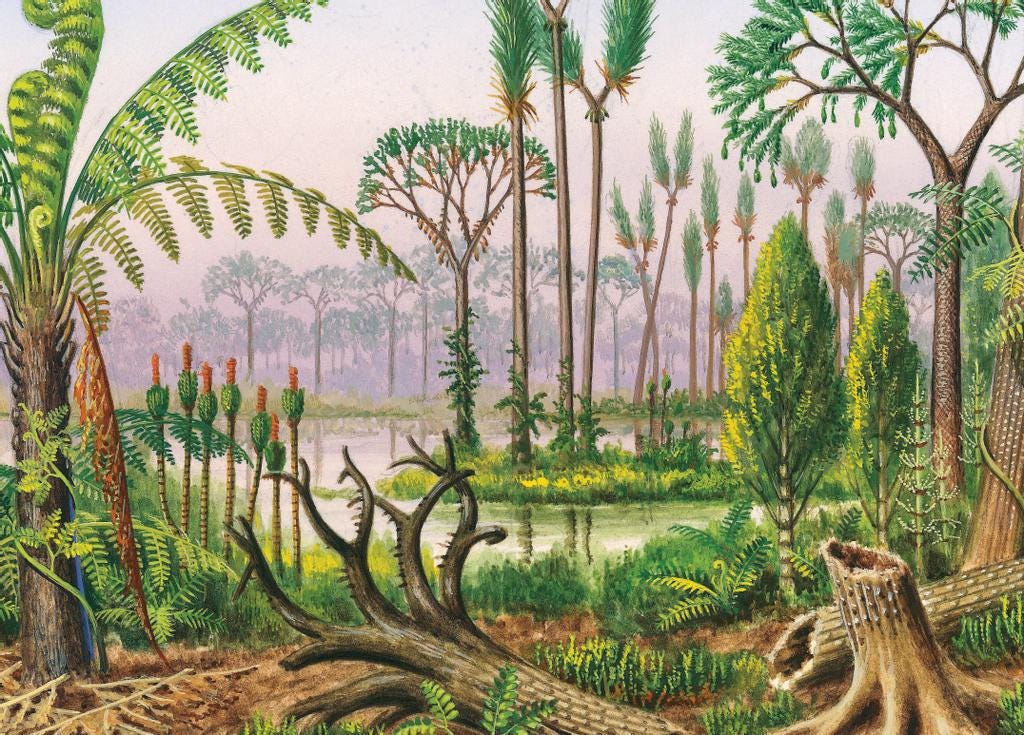What are Fiddleheads Anyway?
Ferrrrrrns!
Fiddleheads are the new growth of ferns. They come out in a spiral from the base of ferns in the spring. Some are edible. Some are not. In this article, I will show you how to tell the difference between the edible and non-edible ferns here in the Pacific Northwest so that you can get some of these delicious spring edibles.
But first … a little bit about ferns because B O T A N Y!
Fernstory, The History of Ferns
(Yes, I just made that up…)
Ferns are a class of vascular plants with around 10,500 known extant species. Some of the earliest fern species are estimated to have arrived on Earth in the Carboniferous Period around 360 million years ago. To give you some perspective on what the landscape on Earth looked like around this period, I’d like you to consider that there were no flowering plants nor mammals on Earth yet.
All plants reproduced by either cones or spores, and the fauna of this period were predominantly marine invertebrates, fish, insects, amphibians, and early reptiles. Oxygen during this period is estimated to be higher than it is today (30 percent compared to today’s 21 percent), allowing plants and insects to thrive and grow quite large. Giant ancestors of the modern dragonflies came around during the Pennsylvanian subperiod with wingspans up to 28 inches (Britannica). Yikes!
Ferns emerged during a period when the Earth’s land surface was mostly tropical to subtropical. Our temperate rainforest ecosystems didn’t come on the scene until around 50 million years ago. During this time, there were a variety of trees and plants that are now commonly found in the Pacific Northwest, Southeastern United States, or Eastern China. Where we currently live in the Pacific Northwest had both lowland subtropical ecosystems similar to that of Florida as well as cooler, wetter ecosystems closer to the climate of Seattle, Washington.
The most notable plants found in our area 50 million years ago sound pretty familiar: Even 50 million years ago, cedars, firs, and other conifers, maples, birch, and ferns dominated our landscape (Burke Museum). There’s also evidence of high volcanic activity during this time, indicating that these species were adaptable and resistant to higher temperatures and even volcanic activity.

It’s kind of crazy to think that ferns of some variety or another have been living here in the Pacific Northwest for almost 300 million years before our modern tree species that we now associate as the dominant indicators of the forest ecosystem. Kind of makes me not want to call these douglas-fir or cedar forests … perhaps they’re just fern and moss forests with some conifers and hardwoods.
The rest of this plant profile is for paid subscribers.
Paid subscribers have the joy of reading my entire collection of in-depth Pacific Northwest plant and mushroom profiles. Each week, I introduce an ethnobotanically significant plant ally that is in season. If that sounds like the kind of content you want in your inbox every week, please subscribe!
As always, I appreciate your support no matter if you’re a paying member or not <3
Keep reading with a 7-day free trial
Subscribe to A Forager's Diary to keep reading this post and get 7 days of free access to the full post archives.







